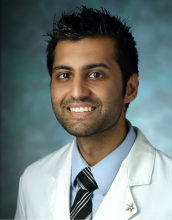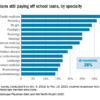Pride profile: Keshav Khanijow, MD
Keshav Khanijow, MD, is a hospitalist at Northwestern Memorial Hospital and assistant professor at Northwestern University, Chicago. Originally from the San Francisco Bay area, he studied anthropology as an undergrad at Johns Hopkins University, Baltimore, then went to medical school at the University of California, San Francisco, followed by internal medicine residency and a hospital medicine fellowship at Johns Hopkins Bayview Medical Center. He came out as gay in 2006 as an undergrad. He is a founding member of the Society of Hospital Medicine’s LGBTQ+ Task Force and is involved with SHM’s Diversity and Inclusion Special Interest Group.
What challenges have you faced because of your sexual orientation in the different stages of your career, from training to now as a practicing physician?
In my early training, there weren’t a lot of accessible LGBTQ role models to talk about balancing my personal identities with my professional aspirations. Being a double minority as both South Asian and a gay male, made it that much more difficult. “What is it like to work in health care as a gay cismale? Will being out on my personal statement affect my entry into medical school? Should I list my LGBTQ activism activities or not?” Those were important to me.
And did you make your activism known?
Thankfully, I did. I joke that my application might as well have been printed on rainbow paper, if you will. I decided to be out because I wanted to be part of an environment that would accept me for who I was. But it was a difficult decision.
In medical school at UCSF, it’s San Francisco, so they were a little ahead of the game. They had a lot of social networking opportunities with LGBTQ and ally faculty. Those connections were important in helping me explore different fields, and I even got to write my first publication. That said, networking could sometimes be challenging, especially when it came to residency interviews. While many people would talk about family activities and engagements, I’d only been out to my family for a few years. As such, there would be somewhat of a disconnect. On the flip side, there were LGBTQ celebrations and cultural concepts important to me, but I couldn’t always connect on those fronts either.
When it comes to patients, I do have a bit of a higher-pitched voice, and my mannerisms can be gender nonconforming. While it did make me the target of some cruel middle school humor, I’ve come to be proud of myself, mannerisms and all. That said, I have had patients make remarks to me about being gay, whether it be positive or negative. For LGBTQ patients, they’re like, “this is great, I have a gay doctor. They’ll know a bit more about what I’m talking about or be able to relate to the community pressures I face.”
But sometimes homophobic patients can be a bit more cold. I’ve never had anyone say that they don’t want to have me as their physician, but I definitely have patients who disagree with me and say, essentially, “oh well, you don’t know what you’re talking about because you’re gay.” Of course, there have also been comments based on my ethnicity as well.








